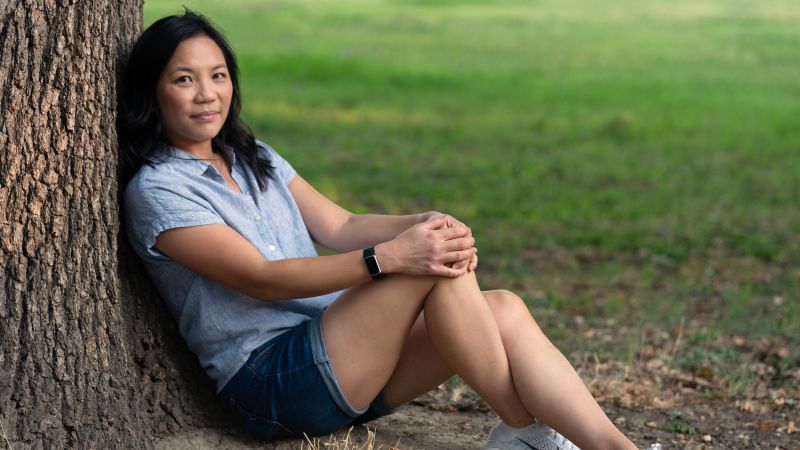Rising Breast Cancer Rates Among Asian American Women Raise Concerns
In the summer of 2018, Christina Kashiwada, a civil engineer from Sacramento, California, noticed a small, itchy lump in her left breast while traveling for work. Initially dismissing it, she continued routine self-checks and medical appointments. However, after a relative encouraged her to undergo a mammogram, she received a shocking diagnosis: stage 3 breast cancer.
“I’m 36 years old, right? No one’s thinking about cancer,” Kashiwada expressed, capturing the disbelief felt by many young women facing similar situations.
The incidence of breast cancer among Asian American and Pacific Islander women is alarming. In 2021, approximately 11,000 women within this demographic were diagnosed, with roughly 1,500 succumbing to the disease. Federal data indicates that the rate of new breast cancer diagnoses among these women—historically lower than other racial and ethnic groups—is rising rapidly, particularly among younger women.
Statistics show that in 2021, about 55 of every 100,000 Asian American and Pacific Islander women under 50 were diagnosed with breast cancer. This figure has now surpassed rates for Black and Hispanic women and is comparable to the rate for white women, as per age-adjusted data from the National Institutes of Health (NIH).
The increase is striking; from 2000 to 2021, diagnoses for Asian American and Pacific Islander women under 50 surged by about 52%. Comparatively, the rate for women of all ages, races, and ethnicities grew by only 3%.
Researchers are striving to understand the cause of this surge within the Asian American community. Potential factors range from cultural shifts to high-pressure lifestyles. However, the complexities inherent in discussing these issues often create barriers for patients and their families.
Helen Chew, director of the Clinical Breast Cancer Program at UC Davis Health, noted, “It’s a real trend,” while emphasizing the difficulty in pinpointing the reasons behind this increase. Questions remain about whether it pertains to an influx of individuals with limited access to healthcare or cultural hesitations around seeking medical help for breast health issues.
The urgency of this research is underscored by the data showing that while breast cancer death rates are declining in most ethnic and racial groups, the death rate for Asian American and Pacific Islander women has remained relatively stagnant. In 2023, about 12 of every 100,000 women in this demographic died from breast cancer, which mirrors the rate from 2000, while the death rate for all women dropped by 30% during the same time frame.
Compounding the issue, nearly 9,000 Asian American women died from breast cancer between 2018 and 2023, compared to 500 Native Hawaiian and Pacific Islander women. Yet, the death rate for Native Hawaiian and Pacific Islander women during that time was 116% higher than that of Asian American women.
Furthermore, rates of other cancers—including pancreatic, thyroid, colon, and endometrial cancer—have risen significantly among Asian American and Pacific Islander women under 50. However, breast cancer remains the most prevalent, particularly concerning due to the aggressive nature of the disease in younger individuals.
Scarlett Gomez, a professor and epidemiologist at the University of California-San Francisco’s Helen Diller Family Comprehensive Cancer Center, reported a consistent yearly increase, particularly steep among those under 50. While the research is underway, the reasons behind this statistical spike remain unclear, with stress and changing lifestyles among the possible contributing factors.
Veronica Setiawan, an epidemiologist at the Keck School of Medicine of USC and a breast cancer survivor, connected this trend with lifestyle changes among Asian immigrants, highlighting that factors like earlier onset of menstruation, delayed childbirth, and reduced breastfeeding may correlate with increased risks.
Dr. Moon Chen from the University of California-Davis pointed out a concerning trend—that only a small portion of NIH funding is allocated for investigating cancer in Asian Americans.
Regardless of the underlying causes, the increasing rates have inflicted emotional strain on many patients. Following her diagnosis, Kashiwada underwent a mastectomy, and during surgery, doctors discovered that the cancer had spread to her lymph nodes. She endured extensive treatment, including chemotherapy and radiation.
Kashiwada kept her illness hidden from her grandmother to protect her from worry. “I didn’t want her to worry about me or add stress to her,” she explained. The support from her mother was crucial, as Kashiwada moved back in with her parents while her children stayed with their father.
After months of recovery and adapting to life post-treatment, Kashiwada returned to work, albeit under medical restrictions. Unfortunately, further complications arose, leading to additional surgeries. Despite her battles, she has gained perspective and urges other young women, especially those within the Asian American community, to be vigilant about their health.
“No matter how healthy you think you are… it does not make you invincible or immune,” Kashiwada cautioned. She encourages women to listen closely to their bodies and be aware of any changes.
Phillip Reese, a data reporting specialist and associate professor of journalism at California State University-Sacramento, contributed to this report. This article was produced by KFF Health News, part of California Healthline, which operates independently under the California Health Care Foundation, with support from the Asian American Journalists Association-Los Angeles through The California Endowment.



